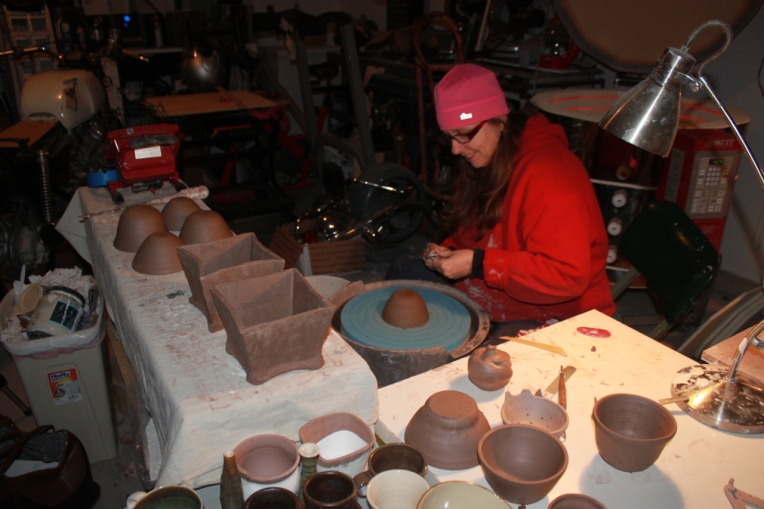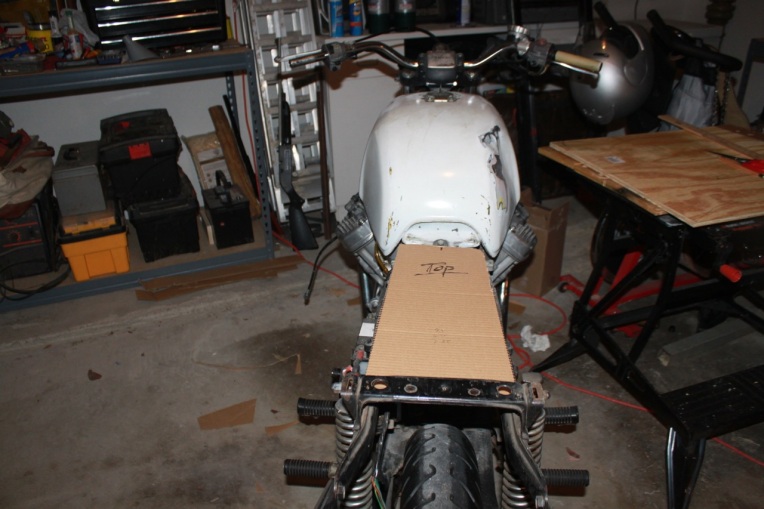Working with porcelain in the studio presents a handful of challenges — especially if you work with other clays as well in the same small space, like I do! I have to thoroughly clean my wheel and workspace when moving from my red stoneware to pure, pristine porcelain. In fact, some would say trying to work with both a red stoneware and porcelain in the same space is ridiculous because of the likelihood of contaminating the porcelain.
But I accidentally found a GREAT solution while at Lowe’s looking for a wooden board to lay across my table that I could use only when working with porcelain. I found this instead:

And it works amazingly well! It’s a laminated kitchen counter segment, and it fits perfectly on top of my 6′ folding table that I use as a workspace. When I am ready to go back to red stoneware, I will box up all these porcelain tools and store the counter against the wall. I have duplicate tools for red stoneware, so there is no cross-contamination. I love discovering simple solutions!










